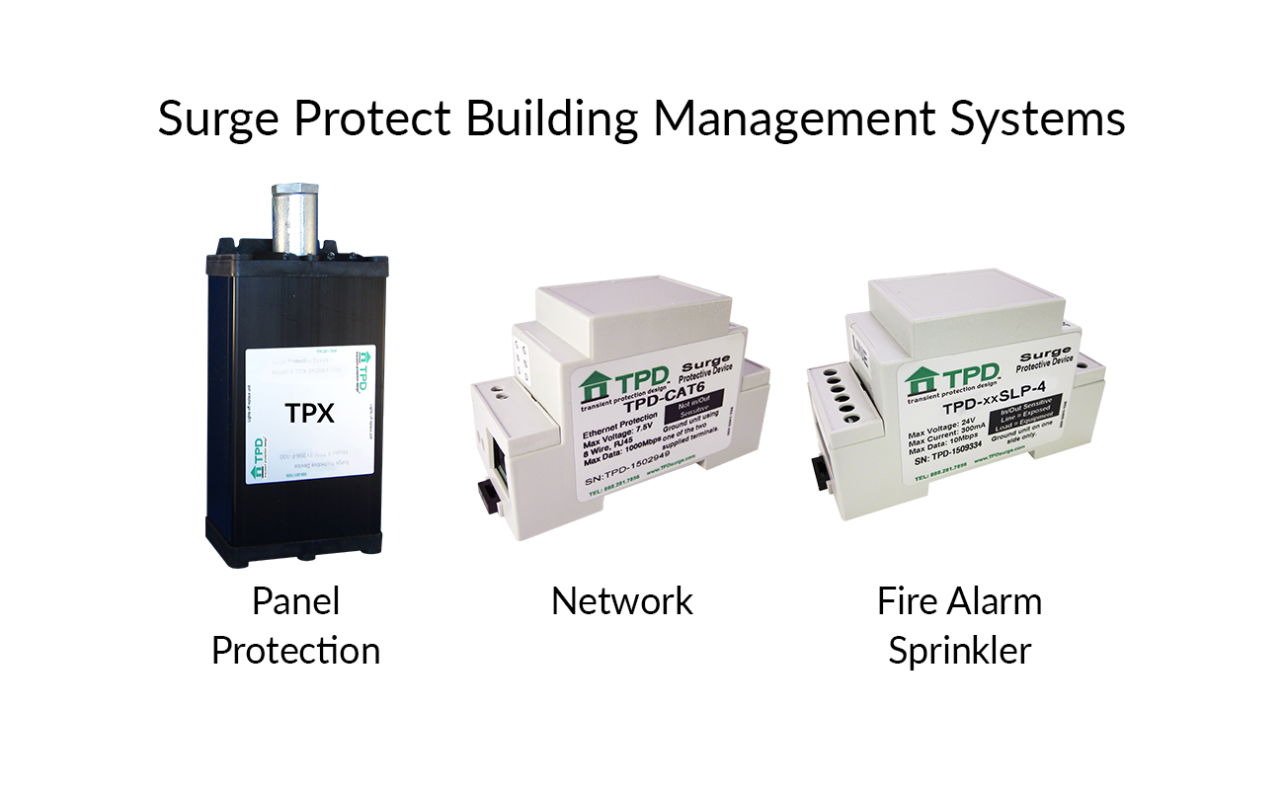Building Management Surge Protection
Building management surge protection is essential for Honeywell, Johnson Controls, and Trane systems, smooth operation of HVAC systems, lighting control systems, elevators and escalators, as well as fire alarm and sprinkler systems in commercial buildings. Implementing surge protection in these areas is critical to prevent malfunctions and damage caused by electrical surges, ensuring consistent performance and safety. By prioritizing surge protection, businesses can enhance the longevity of their building management systems, reduce maintenance costs, and provide a safe, comfortable environment for occupants.
TPX-1S240-F-100 Breaker Panels
TPX-1S240-F-100 Elevator Panels
TPX-1S240-F Lighting Panels
TPD-CAT6 Network Communication
TPD-24SLP4 Low Voltage Controls
TPD-24SLP4 Low Voltage Sprinkler
How to Surge Protect Building Management Systems
Surge Protect Breaker Panels: TPX-3Y208-F-100
Install surge protection on all breaker panels powering building management equipment.
Surge Protect Elevator Panels: TPX-3Y208-F-100
Protect panel directly powering elevator controller. Install surge protection on elevator disconnect powering controller (TPX-240NN-F-100).
Surge Protect Lighting Panels: TPX-3Y208-F
Install surge protection at the lighting panel. Additional protection can be installed on upstream panels power lighting systems.
Surge Protect Network Communication: TPD-CAT6
Install surge protection on network communication. Each sub system should have its own network protection bonded locally to the sub system to help maintain system communications.
Surge Protect Low Voltage Controls: TPD-24SLP4
Install surge protection on all 4-20mA current loops, RS232, RS422 and RS485 communications.
Surge Protect Low Voltage Sprinklers: TPD-24SLP4
Install surge protection on all 4-20mA current loops, RS232, RS422 and RS485 communications.
The Importance of Building Management System Surge Protection
Protection of Critical Systems
Facilities such as commercial or industrial buildings rely heavily on systems like HVAC (Heating, Ventilation, and Air Conditioning), lighting control systems, elevators and escalators, fire alarm, and sprinkler systems for their day-to-day operations. Surge protection ensures that these critical systems are protected against unexpected voltage spikes which can cause significant damage.
Avoidance of Costly Downtime and Repairs
Electrical surges can cause immediate damage to electrical components, leading to costly repairs and downtime. In a commercial setting, any downtime can result in significant financial losses and disruption of operations. Surge protection helps in preventing these occurrences, thereby saving both time and money.
Extended Equipment Lifespan
Regular exposure to electrical surges can gradually degrade the performance and lifespan of building management systems. Surge protection helps to prolong the life of these systems by preventing the stress and damage caused by electrical surges.
Safety and Compliance
In many cases, ensuring that building management systems are protected from electrical surges is not just a best practice but a regulatory requirement. It's essential for the safety of the building's occupants and compliance with electrical and fire safety standards.
Data Protection
Modern building management systems often rely on sophisticated control units and digital interfaces that store and process data. Surges can lead to data loss or corruption, which can be critical, especially in systems like fire alarms or security systems. Surge protection helps in safeguarding this data.
Preventing Electrical Fires
Surge protection is critical in preventing electrical fires. Excessive voltage can cause overheating in wires and electrical panels, which can lead to fires. By controlling the electrical surge, the risk of fire is significantly reduced.
Ensuring System Reliability and Performance
Consistent and reliable performance of building management systems is essential for the comfort, safety, and productivity of those who work in or use these facilities. Surge protection contributes to this reliability by minimizing the risk of unexpected system failures.
Insurance and Liability Considerations
Having proper surge protection in place can also be a factor in insurance considerations. Facilities without adequate protection might face higher insurance premiums or could be at risk of not being covered for certain types of electrical damage.


